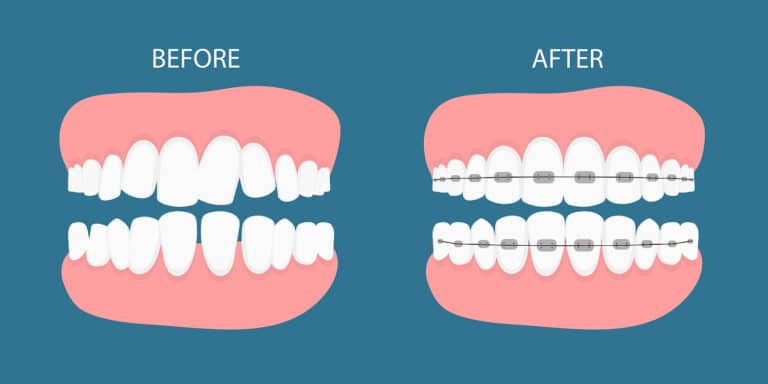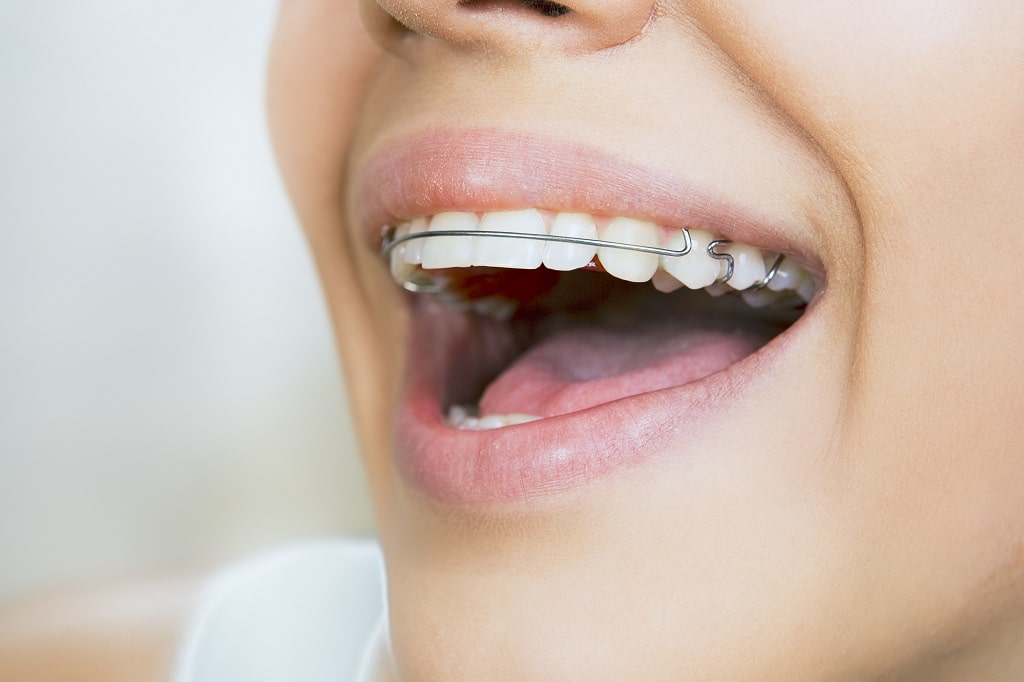12 Questions To Ask Your Orthodontist About Braces
Seeing your orthodontist can be a nerve-wracking experience. After all, your mouth is about to have new hardware inside it that you will have to wear every day until your treatment is complete. But the best way to feel better about your treatment is to ask questions about it. So, Hanson Place Orthodontics will guide you in asking the right questions to your orthodontist about braces, helping you feel better about your treatment.
A good starter question is, how do braces work?
One of the first questions to ask your orthodontist is ‘How do braces work?’ Braces work by putting pressure on your teeth to gradually shift them into proper alignment over a period of time. Braces can treat a variety of misalignment problems, including overbite, crookedness, underbite, open bite, overcrowding, and gaps between teeth.
What can I expect during the appointment?
During the appointment, your orthodontist will perform an inspection of your teeth and jawbone to determine if they are healthy enough to handle braces. This will include x-rays. Any problems such as cavities and gum disease will need treatment first. An impression of your teeth will be made to help the orthodontist map out your teeth and track your treatment.
The orthodontist will bond a bracket to each tooth using an adhesive. Wires and elastic bands will anchor the brackets, and the orthodontist will tighten the wire to place pressure on the teeth.
What types of braces are available?
There are several types of braces you can choose from. All you have to do is ask your orthodontist if any of them are right for you.
-
Traditional Metal Braces
Traditional braces are the most common type of braces and the most visible. The orthodontist glues brackets to each tooth and connects them via wires and elastic bands.
-
Ceramic Braces
Ceramic braces are less visible and can be clear or made to match your natural tooth color. They work the same way as metal braces but cover a larger portion of each tooth.
-
Self-Ligating Braces
Self-ligating braces work the same way as traditional and ceramic braces. The main difference is that you won’t have to use elastic bands to hold the wire in place. A series of doors or clips built into the brackets does that job instead.
-
Lingual Braces
Lingual braces work the same way as the other braces, except they are bonded to the back of your teeth instead of the front. This makes them less visible. However, they are more expensive and can be more uncomfortable.
Another great question to ask your orthodontist is how long do braces take?
Overall treatment with braces takes about 15 to 18 months to complete. Because braces are not removable, your treatment will continue daily without interruption. However, it’s possible to speed up the shifting process by up to 50 percent using a device known as AcceleDent®.
Using AcceleDent® for just 20 minutes every day stimulates teeth to trigger faster shifting via micropulses. The device will add additional cost to your treatment but can be worth it if you want a shorter treatment time and less discomfort.
What are the benefits and disadvantages of braces?
As with other treatments, there are several benefits but also some disadvantages to be aware of before committing to braces treatment. After all, you have to wear them for a year or more.
Benefits
- Improve your overall oral health
- Prevents jawbone erosion
- Improves your speech and digestion
- Boosts your self-esteem
- Reduces bad breath
Disadvantages
- Increases your risk of cavities and gum disease
- Could induce an allergic reaction to materials
- Discomfort in teeth and surrounding tissues
- Shorten roots
The benefits far outweigh the disadvantages, some of which you can prevent by sticking to a thorough dental care routine at home.
Are braces uncomfortable or painful?
There’s no point in lying. You will experience discomfort or pain while wearing your braces, especially at first. Braces work by putting pressure on your teeth. And your mouth will need time to get used to the hardware. Discomfort should decrease with time, but you can also rinse your mouth with saltwater, apply cold packs, or take over-the-counter pain relievers.
Are there dietary restrictions with braces?
Because braces are not removable, you will have to avoid several foods for the duration of your treatment. For instance, don’t eat hard candies and popcorn. Avoid sticky and chewy foods, especially gum. Foods such as apples and carrots should be cut into pieces. If you think a certain food could damage your braces, ask your orthodontist before you eat it.
Again, braces increase your risk of developing cavities. The reason why is because your new hardware can trap food and sugar particles. The best way to avoid health risks and damage is to follow the restrictions.
How do I clean my braces?
Cleaning your braces will require you to spend a little extra time on your daily oral care routine. The best way to clean your braces at home is to gently brush them with a soft toothbrush and toothpaste. Try to reach every nook and cranny you can. To clean between teeth and along the gums, you can utilize floss threaders and oral irrigators.
Your orthodontist will be able to give your braces a more thorough cleaning, so make sure you show up to appointments.
Can I still play sports?
One of the good questions to ask your orthodontist is whether or not you can still participate in sports. Patients who wear braces can still play regular sports. Simply wear a mouthguard to protect your teeth and your hardware.
How much do braces cost?
The cost of braces ranges between $3,000 to $8,000 depending on what type of braces you choose and what kind of treatment you need. Dental insurance covers at least part of the cost of braces, and orthodontists often offer low payment plans that work with just about any budget.
How many orthodontist appointments will I need during braces treatment?
You will need to schedule follow-up appointments every 4-8 weeks so the orthodontist can tighten the wire on your braces. You should also continue regular dentist appointments at least every six months for cleanings.
Are there alternative options to straighten my teeth?
You can find an alternative option for straightening teeth, i.e., Invisalign in Brooklyn, NY. Invisalign® is a series of clear removable aligner trays that you wear for 22 hours a day. You switch to a new set every two weeks to begin the stage of shifting. There are no dietary restrictions with Invisalign®, and the aligners are easier to clean. The cost and length of treatment are similar to braces. If Invisalign® isn’t working for you, you can make the switch to braces.
Contact Us With Questions To Ask Your Orthodontist
If you have questions to ask your orthodontist about getting braces, Hanson Place Orthodontics has answers for you. We proudly serve Clinton Hill, Brooklyn, Manhattan, and surrounding communities in New York. To schedule an appointment or a complimentary consultation, call our office at 718-622-2695 or visit our website today!






